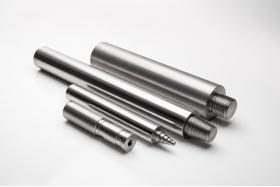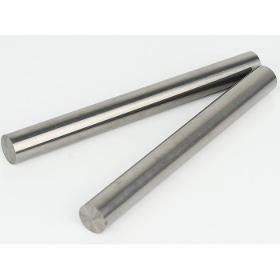- europages
- >
- COMPANIES - SUPPLIERS - SERVICE PROVIDERS
- >
- glass electrodes
Results for
Glass electrodes - Import export

PLANSEE SE
Austria
Electrodes made of molybdenum are used for the melting of glass by means of electrical energy. Plansee molybdenum electrodes have many advantageous properties: high purity, good form stability and high corrosion resistance to molten glass as well as a good electrical and thermal conductivity. Standard sizes are available from stock. Plansee supplies glass melting electrodes made from MoZrO2 for glass production involving particularly aggressive glass melts. Small quantities of zirconium oxide (ZrO2) added to molybdenum enhance the properties of the pure material.
Request for a quote
XIAMEN NINESUN IMP. & EXP. CO., LTD
China
Place of Origin: China Model Number: W1 Material: 99.95% Pure tungsten Color: Silver gray Surface: Rotary forging, turning and polishing Purity: 99.95%Min Density:19.3 G/cm3 Min Shape: Rod / Slab / Plate / Sheet / Foil etc Certificate:ISO9001:2008 Dimension: As requird Supply Ability:1 0 Ton/Tons per Month Packaging Detail: Standard export package. Portof shipment: Xiamen Application Tungsten rods are mainly used as heater, support pillar, feeder and fastener in vacuum or reducing atmosphere high temperature furnace. Moreover, serve as light source in lighting industry, electrode in glass and tombarthite melting, and welding equipment. Features of tungsten rod bar: The outstanding feature of tungsten rod is that they can be batch operated. Among the rod-like metal materials, tungsten rod has the highest melting point. In heat, electric conduction and electron emission, it performs very well.
Request for a quote
NT-MDT LLC
Russia
AFMSICMRaman triple synergy of powerful nanocharacterization techniques Hopping mode ion conductance microscopy noncontact imaging of living cells and jelly surfaces QNM power of AFM and SICM quantitative nanomechanical studies Smart Patch Clamp automatic nanopipette targeting for ion channel studies HighSpeed LongRange HighResolution mapping at nanoscale Nanoinjection nanopipettes with SICM feedback control can be used for local subpicoliter injections to single cells SICM (Scanning Ion Conductance Microscopy) is an SPM technique which uses nanopipette (sharp glass electrode) for noncontact 3D surface mapping at high resolution. In SICM, the probe to sample distance is controlled via the decrease of ionic current flowing through the tip, as it approaches the sample surface. Biophys.Journ. 73, 653658
Request for a quoteDo you sell or make similar products?
Sign up to europages and have your products listed
Results for
Glass electrodes - Import exportNumber of results
3 ProductsCountries
Company type